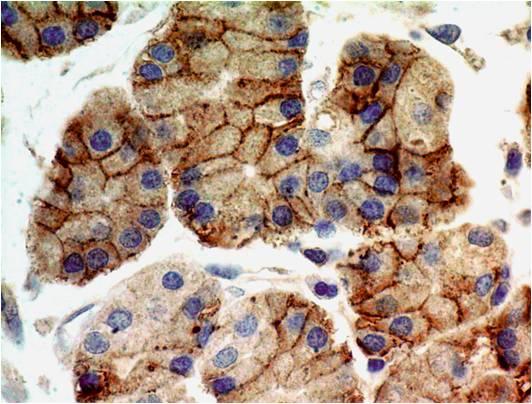Monoclonal Antibody to Mouse CD14 (Clone : Sa14-2)(Discontinued)

Figure-1: Flow analysis of CD14 antibody (Clone:Sa14-2) in Raw cells, blue represents CD14 using 1 µg/ml Rred represents Isotope control Rat IgG2a and black represent Cell alone.
Roll over image to zoom in
Shipping Info:
For estimated delivery dates, please contact us at [email protected]
| Format : | Purified |
| Amount : | 500 µg |
| Isotype : | Rat IgG2a |
| Content : | 0.5 mg, 0.2 µm filtered antibody solution in PBS, containing 0.1% bovine serum albumin. |
| Storage condition : | Product should be stored at 4 °C. Under recommended storage conditions, product is stable for one year. |
The monoclonal antibody 10-3508 recognizes the mouse monocyte marker CD14. The CD14 receptor is a pattern recognition molecule in the innate immune response against microorganisms and other exogenous and endogenous stress factors. CD14 was characterized as a receptor for LPS. The CD14 gene consists of two exons which code for a single mRNA that is translated into a protein of 375 amino acids. The CD14 protein is composed of eleven leucin-rich repeats, which are also found in TLR and which are important in PAMP binding. In contrast to TLR, however, CD14 lacks a transmembrane domain, and thus cannot initiate intracellular signal transduction by itself. The most important CD14 signaling co-receptor is toll-like receptor 4 (TLR4), which activates, among others, the nuclear factor kB (NF-kB) inflammatory pathway. The CD14 protein is processed in the endoplasmatic reticulum and expressed as a 55 kDa glycoprotein on the cell surface via a glycosylphosphatidyl (GPI) anchor. Like other GPI-anchored proteins, CD14 accumulates on the cell surface in microdomains known as lipid rafts. CD14 is expressed pre dominantly on the surface of 'myeloid' cells, such as monocytes, macrophages and neutrophils, but at lower levels also on epithelial cells, endothelial cells and fibroblasts. CD14 is also expressed in a soluble form (sCD14). sCD14 may result from secretion of the protein before coupling to the GPI anchor or from shedding or cleavage from the surface of monocytes. sCD14 is present in the circulation and other body fluids and levels of sCD14 in plasma increase during inflammation and infection. CD14 is a molecule with a broad range of functions. In addition to functioning as a pattern recognition receptor for a variety of microbial ligands, CD14 also acts as a receptor for endogenous molecules like intercellular adhesion molecule (ICAM)-3 on the surface of apoptotic cells, amyloid peptid, ceramide, and urate crystals. Ligation of CD14 by these ligands, except for apoptotic cells, mediates activation of inflammatory responses.
Flow cytometric analysis: 1-2 µg/ml, Immunofluoroscence-2-4 µg/ml
For Research Use Only. Not for use in diagnostic/therapeutics procedures.
| Subcellular location: | Cell membrane, Secreted, Membrane raft, Golgi apparatus |
| Tissue Specificity: | Detected on peritoneal macrophages (at protein level) (PubMed:8612135). Cell surface expression detected in lung alveolar macrophages, dendritic macrophages and lung macrophages (at protein level) (PubMed:19362712). |
| BioGrid: | 198573. 1 interactions. |
|
There are currently no product reviews
|
















.png)










